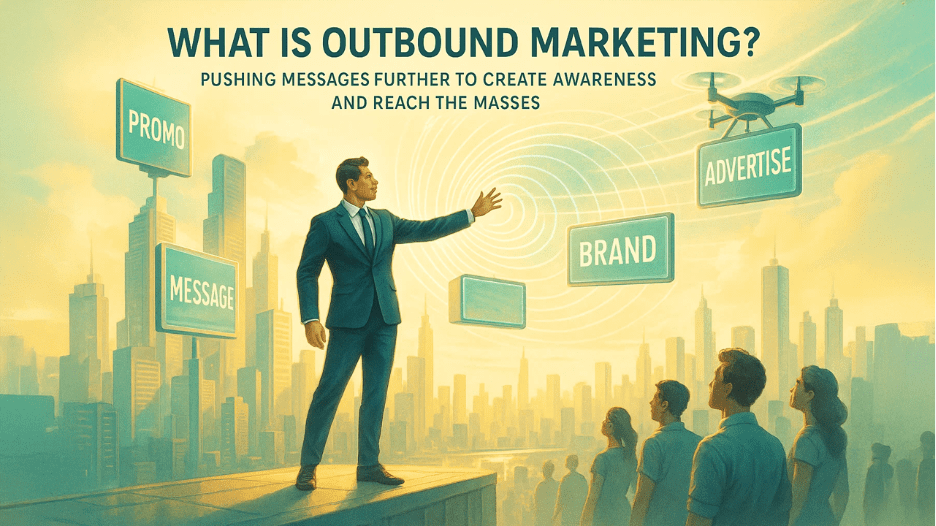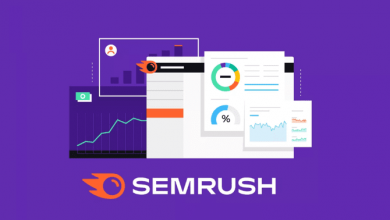Inbound vs Outbound Marketing in 2026: What Works Today & Why

Inbound and outbound marketing are two essential methods for customer acquisition, but they both use different methods and have different purposes. Understanding Inbound vs Outbound approaches is a key part of mastering marketing fundamentals, since they represent the foundation of how brands attract, engage, and convert audiences in today’s digital landscape. Inbound marketing focuses on attracting and engaging a specific target audience by creating valuable content. Outbound marketing takes a more aggressive approach to reach out to a general audience by interrupting their day with advertisements and promotional messages.
Generally, marketers tend to utilize an approach that combines Inbound vs Outbound Marketing strategies, adapting their messages to the changing needs and preferences of potential customers. Inbound marketing is capable of generating higher quality leads and delivering a better ROI than outbound marketing, while outbound marketing may spread brand awareness quickly and reach a larger audience of potential customers.
What is Inbound Marketing?
Inbound marketing, sometimes referred to as pull marketing. It attracts prospective customers to your business by providing valuable content and information. Committed customers extend the reach and impact of inbound marketing when they share their experiences, whether through review or leave feedback. Inbound marketing relies on building long-term relationships, while meeting customers where they are.
Inbound marketing depends on creating and sharing content that aligns with the customer’s interests. Some examples of inbound marketing are listed below:
- Blogs and articles
- Website content
- Organic social media posts
- Video content
- Search engine optimization
Pros and Cons of Inbound Marketing
Pros:
- Non-invasive:Customers decide to engage with content of their interest.
- Educational:Content provides valuable information that addresses immediate needs/concerns of customers.
- Measurable: It is easy to track engagement and content performance; you can analyze every link, page, engagement metric, etc.
Cons
- Needs continuous maintenance:A business must keep adding new content and update previous content to remain relevant.
- Take considerable time and effort:Producing new content takes time, and developing relationships is a long-term effort.
- Requires a holistic strategy:Success relies on using multiple channels (also known as omnichannel marketing) and strategies effectively.
What is outbound marketing?
Outbound marketing, sometimes referred to as push marketing, communicates messages to a large audience to create awareness. In the comparison of Inbound vs Outbound Marketing, this method shows how outbound focuses on proactive outreach rather than attraction. With this method, the business takes the lead and is responsible for disseminating messages so that it can reach as many people as possible. Outbound marketing is well suited to launching new products or entering markets due to the wide exposure this form of marketing provides. Ultimately, the effectiveness of outbound marketing depends on whether the messages are compelling enough to grab people’s attention and pique their interest.
While outbound marketing follows traditional advertising methods, it has evolved with digital advancements. Common outbound marketing tactics include:
- Television and radio ads
- Cold calls
- Email marketing
- Billboards
- Direct mail
Pros and Cons of Outbound Marketing
Outbound marketing has its own distinct benefits that inbound marketing does not offer. For instance, it is generally faster for brands to create awareness, and broadcast reach is easier to do with an outbound approach.
Pros:
- Increases product and brand awareness:Advertising can break through and place a brand in front of a large audience.
- Yields immediate results:Campaigns can lead to a quick increase in sales.
- Familiar and understood:Customers are receptive and used to traditional marketing approaches.
Cons:
- No personalization:Advertising messages are generic without a customer’s specific personal preference.
- Difficult to measure effectiveness: It is difficult to measure ROI if attribution is unclear.
- Expensive to execute:This may require substantial investment to reach a broad audience.
Key Differences Between Inbound and Outbound Marketing
Let’s look at the key differences between inbound and outbound marketing to better understand how each approach shapes customer engagement and drives business growth in distinct ways:
- With inbound marketing, audiences are attracted through valuable and relevant content, including blogs, search engine optimization (SEO), and social media posts. Whereas an outbound marketing approach uses advertisements, cold emails or direct outreach to reach a wider audience. These contrasts are at the heart of Inbound vs Outbound Marketing.
- Inbound marketing is consent-based and engages users who opt to see your content willingly whereas outbound marketing uses an interruption-based strategy to send content to people who have not expressed interest.
- Inbound marketing aims to educate and help people with their informative content which fosters trust over time while outbound marketing emphasizes marketing and sales persuasion, creating immediate attention to eliciting a response.
- Inbound marketing works to develop relationships over time and build credibility. Whereas Outbound marketing looks for short-term visibility and faster conversions.
- Inbound marketing is cheaper and measurable, depending on organic traffic and data, while outbound marketing is often more expensive and not easily measured, as it depends upon repetition and reach.
- Inbound marketing gets attention by providing value and relevancy, while outbound marketing buys attention through paid media and scale.
How Inbound and Outbound Marketing Can Work Together
Inbound vs Outbound Marketing are not contradictory strategies; they complement each other, reaching diverse audiences and driving results effectively.
Complementary strategies
With an effectively executed outbound marketing campaign, a new business or service becomes known to people. Once people are aware, they begin online research by looking for more information. They start finding articles, blogs, and reviews which illustrate how inbound and outbound marketing can operate side by side.
Combining both strategies
Both strategies can complement one another. For example, cold emails can send recipients online content that they can read or watch to further engage them. Once a prospect clicks on a link, they enter a sequenced email campaign that encourages them to engage again in the future.
Also in retail marketing, customers may first learn about a new product from outbound advertising (TV), and later visit the company’s website, read the reviews, and make a purchase. This demonstrates how inbound and outbound marketing reinforce each other.
Which Method is Right for Your Business?
Outbound vs inbound marketing – which one is best for your business?
The success of both approaches to SaaS marketing depends on your business goals, the people you want to reach, and what you are promoting. Inbound vs Outbound Marketing comparisons become crucial here, as each serves different goals for B2B and B2C contexts. Inbound marketing is the better option for B2C, and where customers are familiar with the products and services you have to offer. Inbound marketing allows you to create informative blogs to answer frequently asked questions from the intended audience.
It’s an opportunity to present how useful your product features are, and it allows people to have the option to share through dark social if they like it, and they can always return to the solution when they have a need. So, when deciding on Inbound vs Outbound Marketing, inbound marketing will be a superior option since it increases your organization’s search ranking and notifies more people about your offer.
On the other hand, outbound would be useful in B2B marketing and for companies that want to bring new products and services to market. Outbound marketing strategies help you develop new business streams or establish new markets. The reason is that decision makers sift through many sources of information and sometimes just need to give a little push to customers to choose their product over the competition. Cold calling CEOs can certainly be an effective method for generating valuable B2B leads
However, the reality is that you don’t even have to make the choice! It’s really hard to ignore the power of inbound marketing, however, that does not mean we should write outbound off. The best performing organizations are likely to be those that blend both approaches. Successful data-driven marketing means creating valuable content and establishing easy ways for customers that want to connect, while developing more nuanced ways to target the broad base of potential leads. In summary, you need both.
Conclusion
Inbound establishes relationships, trust, and long-term loyalty through an already lengthy and drawn-out process of creating content and attracting people, while outbound activates awareness and reaches new audiences almost immediately. The real power comes from knowing when to implement each. Companies that combine the pull of inbound marketing that builds followers and loyal customers, with the reach of outbound marketing that builds awareness amongst new audiences, strengthen relationships and foster consistent, ongoing growth, while keeping their business flexible and adaptable.
Ultimately, mastering Inbound vs Outbound Marketing is about balance. In 2026, the smartest marketers won’t abandon one in pursuit of the other; instead, they will learn how to use both together.




